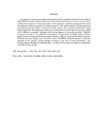Guilty speculators? Range-based conditional volatility in a cross-section of wheat futures

Open access
Datum
2018-06Typ
- Journal Article
ETH Bibliographie
no
Altmetrics
Abstract
In response to the unusually high levels of price volatility during the world food price crisis of 2007/2008, US and EU regulators have introduced position limits that aim to protect commodity markets from exposure to excess speculation. Such regulatory initiatives presuppose that excess speculation is indeed responsible for excess volatility. Our results debunk this presupposition and show the opposite effect: speculative activity reduces price volatility, particularly during times of distress. Our findings are based on a cross-section of wheat futures contracts, traded at five different commodity exchanges with various degrees of speculative activity. Volatility is estimated based on a Conditional Autoregressive Range Model (CARR), which is further augmented with exogenous excess-speculation shocks (CARRX). These models capture herding, feedback and noise trading, and a threshold version (TCARRX) identifies regimes in which the anatomy of the volatility process changes according to the level of excess speculation. Our findings support Working’s hypothesis that a certain level of excess speculation is essential for a well-functioning market. Mehr anzeigen
Persistenter Link
https://doi.org/10.3929/ethz-b-000313778Publikationsstatus
publishedExterne Links
Zeitschrift / Serie
Journal of Commodity MarketsBand
Seiten / Artikelnummer
Verlag
ElsevierThema
range based volatility; wheat futures; speculationOrganisationseinheit
03446 - Bernauer, Thomas / Bernauer, Thomas
ETH Bibliographie
no
Altmetrics




